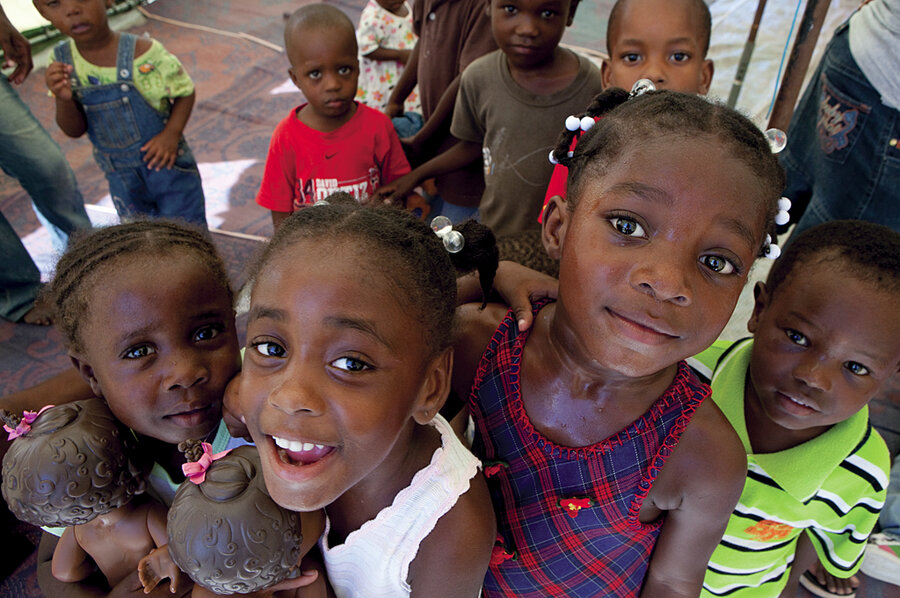The Samaritan's dilemma: How best to help after a natural disaster?
Loading...
There are harder decisions that we make, but few are as heartbreaking as the one called the “Samaritan’s dilemma.” You face it every time you encounter a panhandler on the street. Are you creating a dependency or meeting an urgent need, paying for a hot meal or cheap rum? People who say there’s an easy answer are failing to listen either to their head or their heart.
Ten thousand variations on the Samaritan’s dilemma occur every minute across the planet. Does extending unemployment benefits create an incentive not to work, or is it the humane thing to do in a no-growth job market? Do shipments of food aid from one side of the world wreck farm economies on the other? If I boost Junior’s allowance, will he learn to save or just blow the money on video games?
The impulse to help is especially acute when a natural disaster strikes. Millions of us are moved by images of suffering – the buckled buildings, orphaned children, weeping mothers. There but for the grace of God, we think. Charitable donations pour in. Well-meaning people offer their services. May it ever be so.
But then a whole series of secondary problems arise. In a Monitor special report, Ezra Fieser and Sara Miller Llana explore the complexities surrounding disaster relief, focusing on Haiti, which is still struggling with basic needs a year after an earthquake devastated it. Ezra and Sara introduce you to relief workers like Emmett Fitzgerald, who travel the globe “with not much more than a few suitcases of belongings and a big heart, landing in broken or violent or dysfunctional nations.”
There is no doubt about the lives they save. And the difficulties they encounter on the ground. Sometimes agencies step on each other in the rush to lend a hand. Sometimes aid doesn’t help the intended. Sometimes recovery undermines local governments or individual initiative. Relief workers freely admit that they can do better. They will need to.
More than 119 million people were affected by natural disasters in 2009. Last fall, Save the Children published a report analyzing likely humanitarian problems over the next decade. Of particular concern, the report noted, are environmental and demographic trends. The growth of urbanization – with forecasts of some 60 megacities of more than 10 million people each by 2015 – means that when earthquakes or floods hit, destruction and dislocation are now on a tremendous scale.
Meanwhile, many smaller-scale disasters brought on by shifts in weather patterns go virtually unnoticed: Droughts that used to hit Ethiopia every six to 10 years now occur every year or two, the report notes. Flooding along the Zambezi River in Southern Africa has shifted from every few years to almost annually.
In the past 50 years, disaster relief has evolved from ad hoc and disorganized to essential and institutional. Every responsible government and charity has an emergency response agency that prepares for the worst and coordinates with other agencies. From hurricane Katrina to the Haiti earthquake to the late-December blizzard that pounded New York City – almost all emergency responses can be faulted for falling short.
Which stands to reason. A disaster, by definition, is not business as usual. It is a big, tragic event in which humans are the victims. An earthquake with few around (see New Madrid, Mo., in 1812) is not the same as one that reduces San Francisco or Port-au-Prince to rubble.
Through it all, Samaritans continue to step up. Businessman-turned-philanthropist Jim Ansara flew to Haiti after last year’s quake and has gone back again and again. He is now building a hospital in the capital. Pitching in was no dilemma for him. Like relief worker Emmett Fitzgerald and millions more, his heart wouldn’t stay quiet.
John Yemma is the editor of The Christian Science Monitor.





